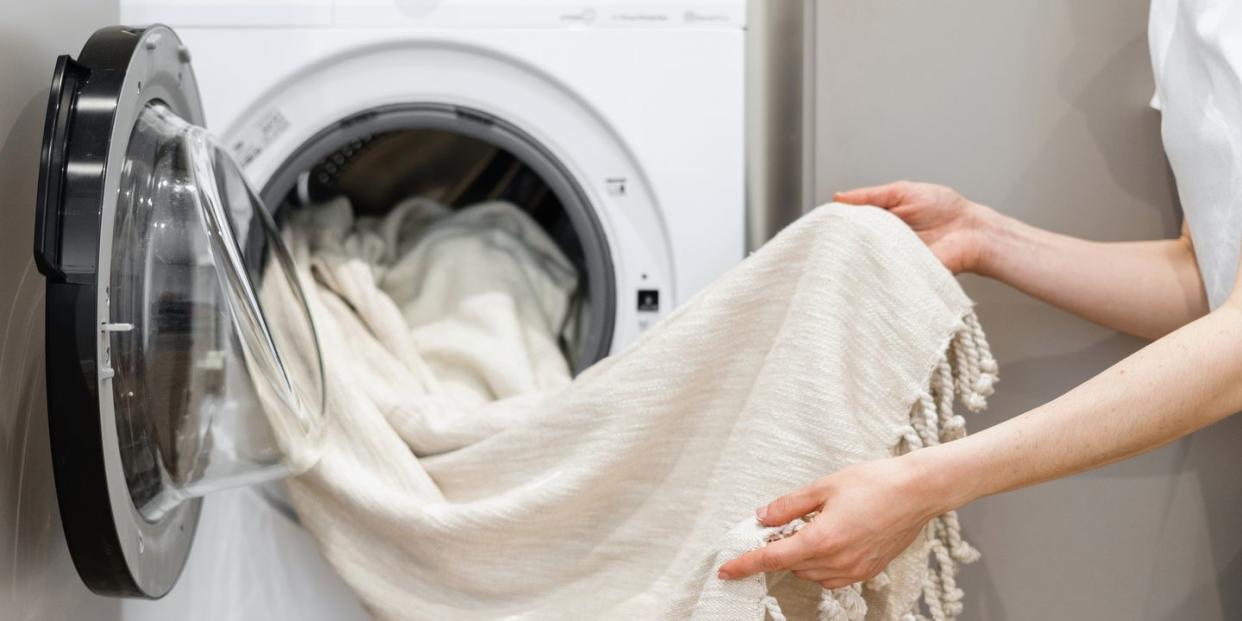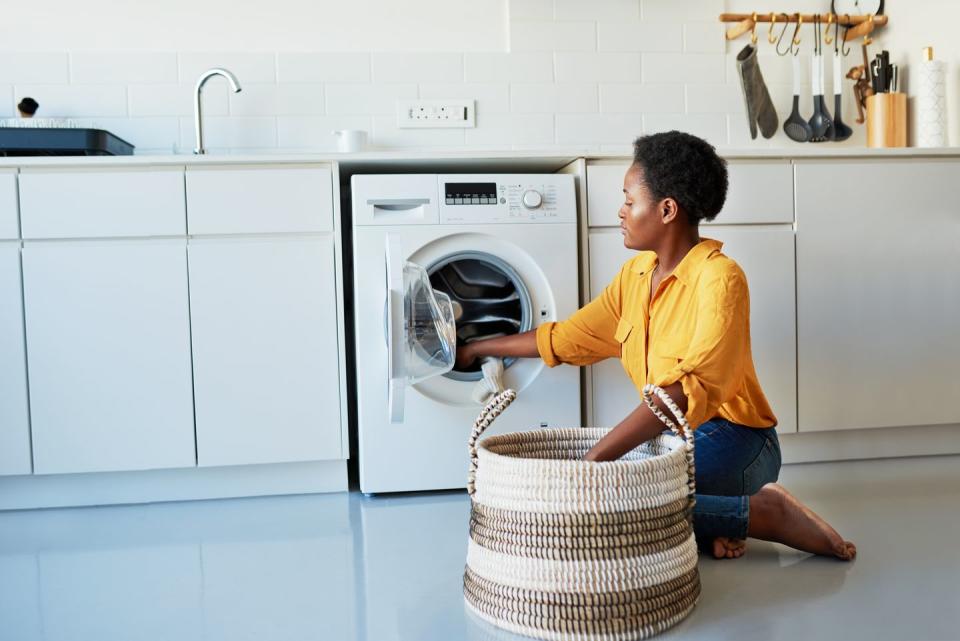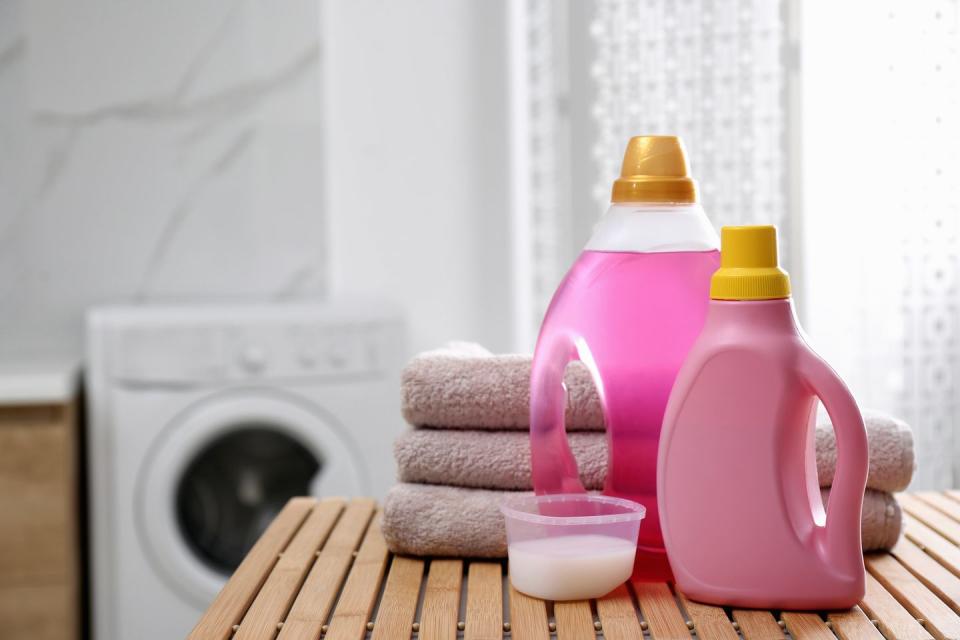7 ways to prevent wrinkled clothes

Love Good Housekeeping and want more of our Triple-Tested recipes, home tips, fashion inspiration, essential consumer advice and so much more delivered to your inbox? Sign up to our FREE weekly newsletters, sit back and enjoy!
Few of us enjoy ironing. In fact, in a recent survey to celebrate 100 years of the GHI, ironing was voted one of the most unpopular of chores ever. Were you to give GH readers a magic wand, 16% would use it to complete the ironing with a flick of the wrist!
Because of this, we’re always looking for ways to reduce wrinkles in our laundry. That way, the ironing can be skipped altogether, or at least speeded up! We’ve found 7 ways to prevent creased laundry to save you time and effort – follow as many as you can to get the best results.
1. Consider the material
Taking it back to basics, consider if the fabrics you’re buying are liable to crease. If you truly hate ironing, this can save you from the chore altogether.
For instance, cotton, linen and delicates will crease much more quickly and more obviously compared to a synthetic blend. And something with lots of layers or detail is only going to make ironing all the more time consuming. Wool and knitwear don’t tend to crease as much, thanks to their heavy-weight structure.
When buying new clothes, always check the care label to confirm the washing directions and the material composition. This can reveal how easy the item will be to maintain.

2. Don’t overload washing machine or dryer
While you might want to get the best value out each wash, overloading your washing machine is a bad idea. Not only does it encourage creases, it impacts the performance of the machine. Detergent can’t reach every item so easily, the load can’t agitate so effectively, and everything is damper than it should be at the end, which slows the drying process.
Overfilling the dryer prompts creases too. If you think about it logically, the more tightly packed items are as they wash and dry, the more creased they’re going to be. Overcrowding the dryer leads to a slower drying process as well, with uneven results. So stick to the recommended capacities for both to avoid excess creases and an impaired performance. For guidance, we recommend filling washing machines to about ¾ full, while dryers should be filled to just over half-full.
3. Use fabric softener
Fabric softener does more than soften your clothes. By removing any static, it helps keep them wrinkle-free too - and has the bonus on top of leaving a pleasant fragrance behind. It works by applying positively charged chemical compounds onto the fabric’s surface which cancel out any negative compounds. Consequently, the item feels softer and appears smoother.
So, by adding fabric softener to your detergent drawer, you’re automatically getting less creased results. Or, you could alternatively spray Lenor’s Crease Release Spray onto a wrinkled item for immediate wrinkle-relief too.

4. Anti-wrinkle cycles
Look out for any settings on your washing machine and tumble dryer that can help keep creases to a minimum. Some washers offer ‘easy iron’ programs; this reduces the spin speed and cycle time to lessen wrinkles and makes the item easier to iron. For other settings, you can always reduce the spin speed manually to achieve the same result, but keep in mind the laundry will naturally be damper the lower you go. Because of this, you won’t want to reduce the spin if you’re moving the item immediately to the dryer. Other washing machines feature steam settings to help relax the fibres and release creases during the cycle.
Steam technology can be found in tumble dryers too. Again, this aids with crease removal and can help freshen up items. Failing that, look out for dryers which will automatically rotate the drum sporadically at the end of the cycle. This prevents any creases from settling in. The ‘iron dry’ setting will also leave items slightly damp once the program finishes, so removing creases with the iron will be quicker, much like the ‘easy iron’ setting.
5. Spread it out
If you hang your clothes out to air dry, make sure to shake out each item beforehand. This opens up the fibres and prevents static, softening them. Then spread the item out as much as possible on the line or drying rack. This eases out any wrinkles which may have formed in the wash and helps it dry smooth. Do not bunch up or overlap garments as this will slow the drying process and create wrinkles.
If you’re using pegs, opt for those with a soft grip, such as these Culiclean Clothes Pegs. These are less likely to leave marks where they’re clipped. And when hanging shirts, jumpers and jeans, invert them so you peg from the bottom hems. For jeans, the weight of the upper section will help stretch out any creases, while for jumpers, this avoids any stretching or marks on the shoulders.

6. Dryer balls
Dryer balls can help separate your laundry as they bounce around in the tumble dryer, speeding up the drying process by providing better air circulation. As they make contact with items and agitate the load, they can also help soften it and prevent creases and static. This is because with the load being better separated, there’s less friction between items and so less opportunity for wrinkles to form.
Dryer balls are predominantly available in wool or rubber. We recommend the Boss It Rapid Dryer Ball; with a reflective surface, it’s designed to better distribute the heat as it bounces around.
7. Take advantage of the shower
It’s an old method, but it works! Hanging creased items in the bathroom while you shower can really help get rid of any lingering creases. Much as it is with the best clothes steamers, steam will relax the fibres of the item and help restore it to a smoother state.
Of course, you don’t want the steam to linger in your bathroom any longer than necessary; it’s moisture so it encourages limescale and mould. So you should vent it as efficiently as possible once you’ve finished showering, such as with a dehumidifier or by opening a window. We should also mention that this technique only works for light creases on lightweight items. It’s by no means comparable to an iron, or even a clothes steamer.
You Might Also Like


